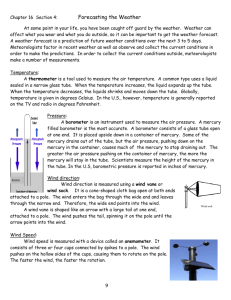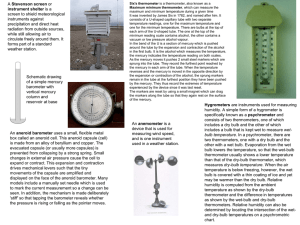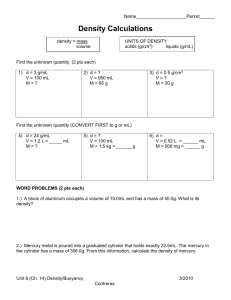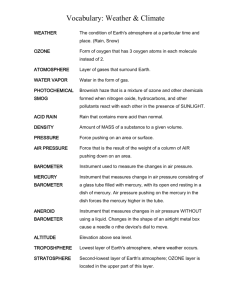International Physics Olympiad, 1971
advertisement
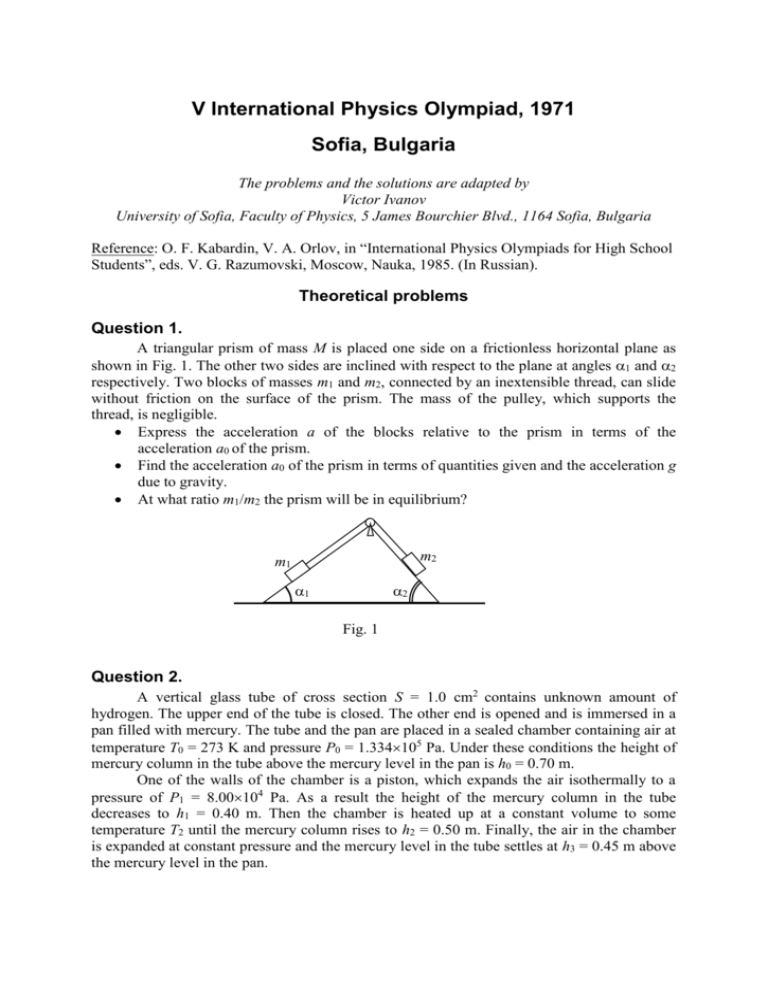
V International Physics Olympiad, 1971 Sofia, Bulgaria The problems and the solutions are adapted by Victor Ivanov University of Sofia, Faculty of Physics, 5 James Bourchier Blvd., 1164 Sofia, Bulgaria Reference: O. F. Kabardin, V. A. Orlov, in “International Physics Olympiads for High School Students”, eds. V. G. Razumovski, Moscow, Nauka, 1985. (In Russian). Theoretical problems Question 1. A triangular prism of mass M is placed one side on a frictionless horizontal plane as shown in Fig. 1. The other two sides are inclined with respect to the plane at angles 1 and 2 respectively. Two blocks of masses m1 and m2, connected by an inextensible thread, can slide without friction on the surface of the prism. The mass of the pulley, which supports the thread, is negligible. Express the acceleration a of the blocks relative to the prism in terms of the acceleration a0 of the prism. Find the acceleration a0 of the prism in terms of quantities given and the acceleration g due to gravity. At what ratio m1/m2 the prism will be in equilibrium? m2 m1 1 2 Fig. 1 Question 2. A vertical glass tube of cross section S = 1.0 cm2 contains unknown amount of hydrogen. The upper end of the tube is closed. The other end is opened and is immersed in a pan filled with mercury. The tube and the pan are placed in a sealed chamber containing air at temperature T0 = 273 K and pressure P0 = 1.334105 Pa. Under these conditions the height of mercury column in the tube above the mercury level in the pan is h0 = 0.70 m. One of the walls of the chamber is a piston, which expands the air isothermally to a pressure of P1 = 8.00104 Pa. As a result the height of the mercury column in the tube decreases to h1 = 0.40 m. Then the chamber is heated up at a constant volume to some temperature T2 until the mercury column rises to h2 = 0.50 m. Finally, the air in the chamber is expanded at constant pressure and the mercury level in the tube settles at h3 = 0.45 m above the mercury level in the pan. Provided that the system is in mechanical and thermal equilibrium during all the processes calculate the mass m of the hydrogen, the intermediate temperature T2, and the pressure P in the final state. The density of mercury at temperature T0 is 0 = 1.36104 kg/m3, the coefficient of expansion for mercury = 1.8410–4 K–1, and the gas constant R = 8.314 J/(molK). The thermal expansion of the glass tube and the variations of the mercury level in the pan are not considered. Hint. If T is the interval of temperature variations of the system then T = x << 1 In 1 1 x . that case you can use the approximation: 1 x Question 3. Four batteries of EMF E1 = 4 V, E2 = 8 V, E3 = 12 V, and E4 = 16 V, four capacitors with the same capacitance C1 = C2 = C3 = C4 = 1 F, and four equivalent resistors are connected in the circuit shown in Fig. 3. The internal resistance of the batteries is negligible. Calculate the total energy W accumulated on the capacitors when a steady state of the system is established. The points H and B are short connected. Find the charge on the capacitor C2 in the new steady state. C1 D C E1 A C3 E2 H B E3 E C4 C2 G E4 F Fig. 3 Question 4. A spherical aquarium, filled with water, is placed in front of a flat vertical mirror. The radius of the aquarium is R, and the distance between its center and the mirror is 3R. A small fish, which is initially at the point nearest to the mirror, starts to move with velocity v along the wall. An observer looks at the fish from a very large distance along a horizontal line passing trough the center of the aquarium. What is the relative velocity vrel at which the two images of the fish seen by the observer will move apart? Express your answer in terms of v. Assume that: The wall of the aquarium is made of a very thin glass. The index of refraction of water is n = 4/3. Experimental Problem Apparatus: dc source, ammeter, voltmeter, rheostat (coil of high resistance wire with sliding contact), and connecting wires. Problem: Construct appropriate circuit and establish the dependence of the electric power P dissipated in the rheostat as a function of the current I supplied by the dc source. 1. Make a plot of P versus I. 2. Find the internal resistance of the dc source. 3. Determine the electromotive force E of the source. 4. Make a graph of the electric power P versus resistance R of the rheostat. 5. Make a graph of the total power Ptot dissipated in the circuit as a function of R. 6. Make a graph of the efficiency of the dc source versus R.



